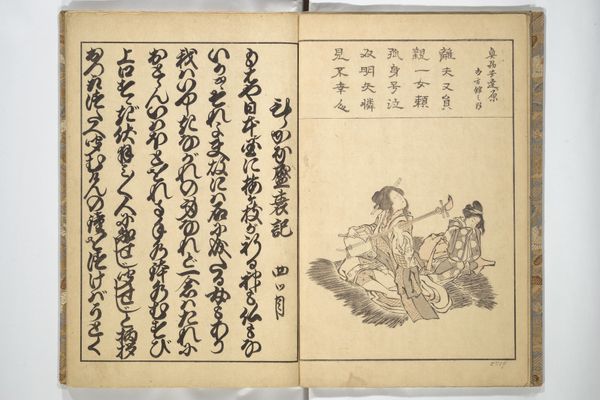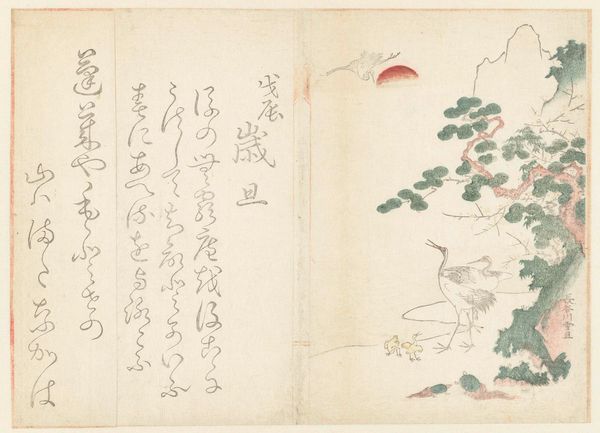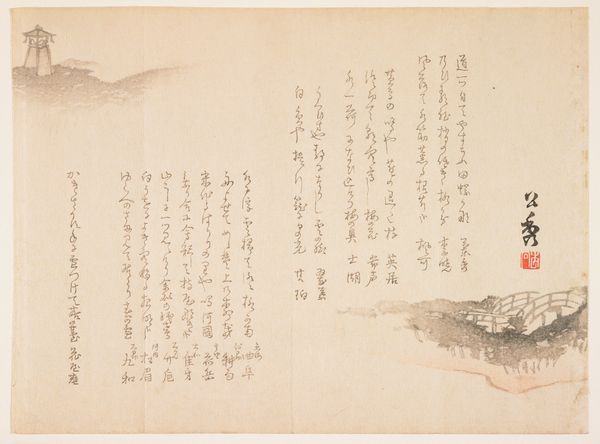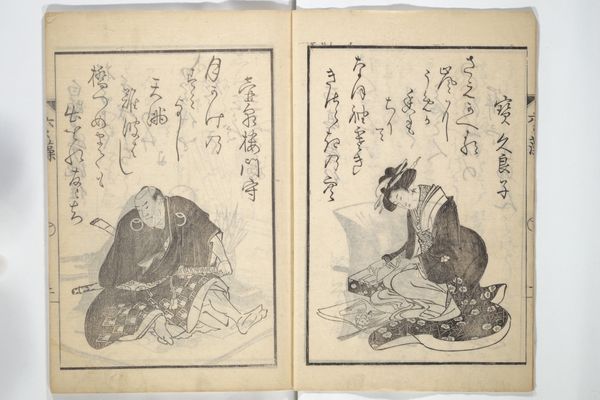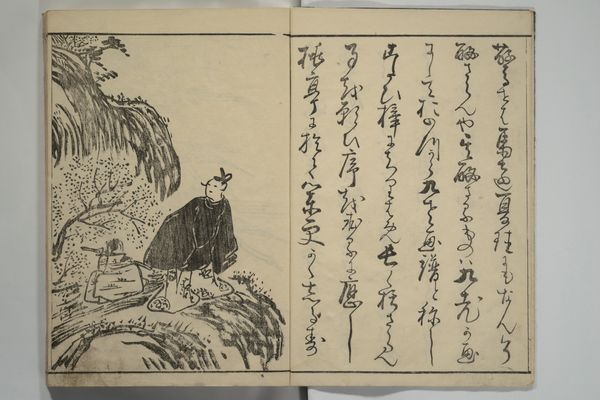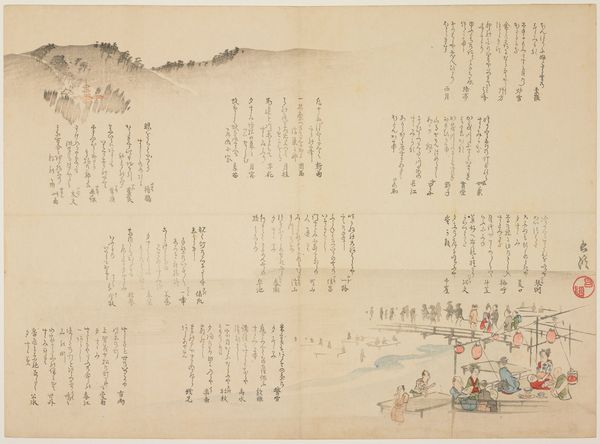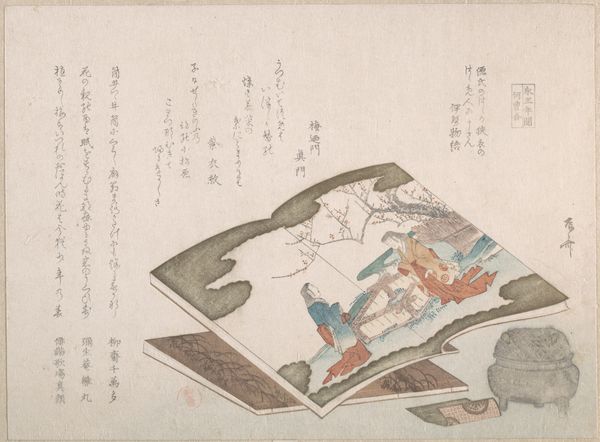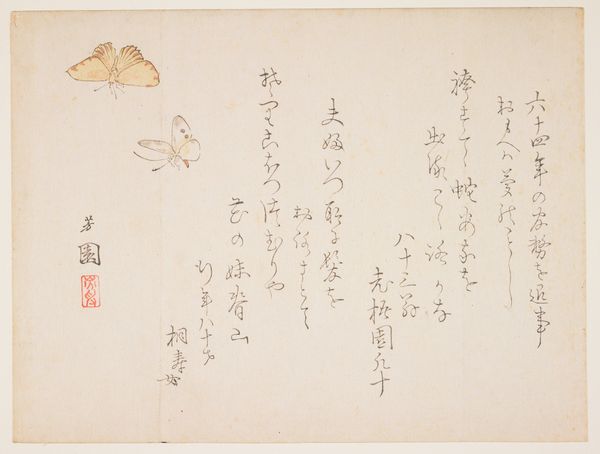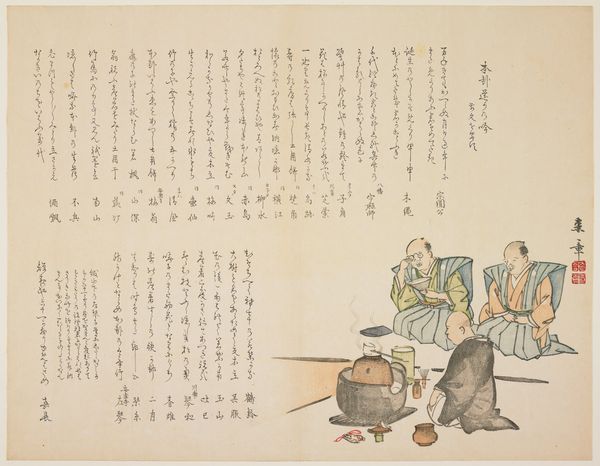
Album of Flowers and the Moon (Kagetsu jō 花月帖) 1875 - 1899
0:00
0:00
drawing, print, paper, ink, woodblock-print
#
drawing
#
aged paper
#
narrative-art
# print
#
book
#
asian-art
#
figuration
#
paper
#
ink
#
woodblock-print
#
24_meiji-period-1868-1912
Dimensions: 10 1/8 × 6 1/2 in. (25.7 × 16.5 cm)
Copyright: Public Domain
Editor: This is a page from *Album of Flowers and the Moon (Kagetsu jō 花月帖)*, dating from 1875 to 1899, by Mori Tetsuzan. It's an ink and woodblock print on paper. The silhouetted figures give it a rather dreamlike, ambiguous quality. How do you interpret this work? Curator: Indeed. It is a powerful image, imbued with the evocative symbols that point towards broader cultural understanding. Look at the figures themselves – we see what appears to be a Yama-bushi, a mountain ascetic, almost silhouetted on the right. Consider the weight this image carried in Meiji-era Japan. These wandering ascetics embodied a certain freedom but also marginality. Does that contrast tell us anything about this time? Editor: The mountain ascetic figure does create a powerful sense of spiritual yearning…but what are the others doing? Curator: Look closely, there's a child with what appears to be cookware... This speaks to folklore and storytelling in Japan. What does seeing this iconography, during this era, evoke within you? The figures may represent a narrative we can't immediately access, a memory preserved through image. Editor: So, you are saying this is not merely decorative, but potentially a deeper reflection on societal changes in the Meiji period through culturally symbolic imagery? Curator: Precisely. The image acts as a carrier of cultural memory, sparking conversations and introspection long after its creation. Editor: I'm beginning to understand how these seemingly simple prints are actually layered with historical and cultural significance. Curator: The lasting power of visual symbols can sometimes unlock greater knowledge through imagery than text can contain. Editor: This has opened my eyes to looking for narrative in visual objects that previously felt abstract or simply aesthetic.
Comments
No comments
Be the first to comment and join the conversation on the ultimate creative platform.

